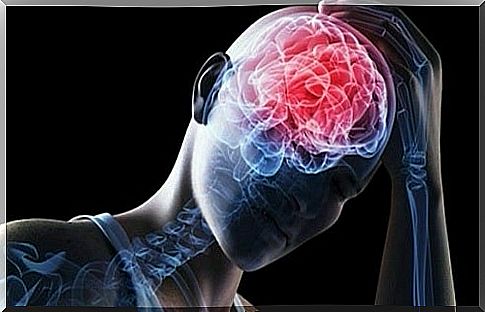The 4 Most Common Cerebrovascular Diseases You Should Know
Cerebrovascular diseases (CVD) refer to all those conditions in which circulation is temporarily or permanently impeded in a specific area of our brain.
We all know, directly or indirectly, someone who has suffered a stroke, an aneurysm or a small stroke. All these diseases can leave a permanent impact on us and even take our lives.
In the best cases, they will only be in a fright, but it will force us to take care of our lifestyle as much as possible. Likewise, it must also be said that most of us are not sufficiently aware of these diseases.
Unless we have lived some of this experience very closely, in general, we do not appreciate enough the impact that factors such as blood pressure, high cholesterol or being overweight have on our brain health.
A good portion of the deaths that occur each year from cerebrovascular diseases could be prevented. The rest, such as those strokes that affect patients who are still very young or people who take maximum care of their lifestyle, are realities that, without a doubt, still escape our understanding and even logic.
Be that as it may, there are certain aspects on which we should reflect: prevention, submitting ourselves to periodic reviews to measure, for example, our blood pressure and other associated indicators would undoubtedly make many of these sad realities reduce their impact on us. .
The 4 most common cerebrovascular diseases
As we have pointed out at the beginning, all cerebrovascular diseases appear due to a problem in the blood supply. Thus, any alteration in the circulation of blood flow can give rise to two types of diseases : ischemic and hemorrhagic.
It should be said that ischemic ones are, without a doubt, the most common and most of them tend to have the same origin: atherosclerosis. In our space we have already spoken to you on numerous occasions about atherosclerosis: it occurs when our cholesterol levels are very high and this is also joined by the dreaded inflammation of the arteries of the brain.
All of this gives rise to a slow, progressive and very debilitating disease: the accumulation of plaque in the blood vessels. This causes problems in the circulation of blood flow to the brain and, in the long term, until the appearance of cognitive problems and dementias.
We are not facing something slight, before something that we can neglect: prevention and the correct habit of life that we practice today will be noticed in the future.
1. Cerebrovascular diseases: cerebral thrombosis
- Thrombosis is an ischemic stroke.
- Strokes, in 80% of cases, have this same origin.
- It occurs after the narrowing of any of the cerebral arteries due to the appearance of a thrombus that blocks the flow of blood.
It should be said that, in general, this type of disease usually gives small warnings before the complete closure of the cerebral vessels occurs. Therefore, it is vital that we watch out for symptoms:
- Numbness of half the face or one side of the body.
- Very severe headache.
- Difficulty communicating and understanding.
- Dizziness and trouble walking.
- Vision problems.
2. Cerebral embolism
Cerebral embolism is another type of cerebrovacular condition of ischemic origin. Now, if in the previous case we had a thrombus, now the origin is in an embolus. To understand it better: a thrombus is a blood clot that forms in the wall of a major artery and obstructs circulation.
The embolism is produced by an embolus, that is, a piece of plaque from an artery that breaks off and reaches the brain.

However, unlike cerebral thrombosis, this embolus originates far from the obstruction itself – usually in the heart. Regarding the symptoms, it should be said that it is very similar to thrombosis: numbness on one side of the body, difficulty in expression and communication …
However, if a patient with an embolism is treated quickly, he or she may receive a drug called tPA capable of dissolving these emboli. Life expectancy then improves by a high percentage.
3. Brain or intracerebral hemorrhage
We have already discussed the two most common ischemic brain diseases. Now we stop at those conditions whose trigger is due to a hemorrhage. Aneurysms are the most common. In this case, we are facing an abnormal dilation of a weak area of a blood vessel within the brain.
The moment that aneurysm ruptures, cerebral hemorrhage appears. As shocking as an aneurysm can be, it is fair to say that ischemic strokes are still the most damaging, the most damaging, and the longest lives each year.
Likewise, it should be said that the biggest problem with an aneurysm is that it does not have excessive symptoms. There are people who can suffer from a dilation in a blood vessel in the brain for years and not notice anything until, at a certain moment, and due to pressure, it ruptures.
4. Subarachnoid hemorrhage
Subarachnoid hemorrhages occur many times due to uncontrolled blood pressure. In this case we also have the rupture of a blood vessel, although in this type of condition they are always located on the surface of the brain.
The effusion is located in the space between the brain and the skull, the subarachnoid space, without ever entering the brain itself. Life expectancy after suffering this type of hemorrhage always depends on the speed of medical attention. Thus, it is vital that we know how to recognize the symptoms:
- Trouble concentrating
- Sore eyes with bright light
- Irritability, bad mood, personality changes
- Neck and shoulder pain
- Vomiting, dizziness
- Seizures
Without a doubt, the most obvious symptom is the one related to vision: we can lose sight for a few minutes, see intense lights or optical phenomena.
In any case, in the face of any problem or small anomaly that reminds you of a symptom of these cerebrovascular diseases, there is no doubt: it is necessary to consult a health professional immediately.









